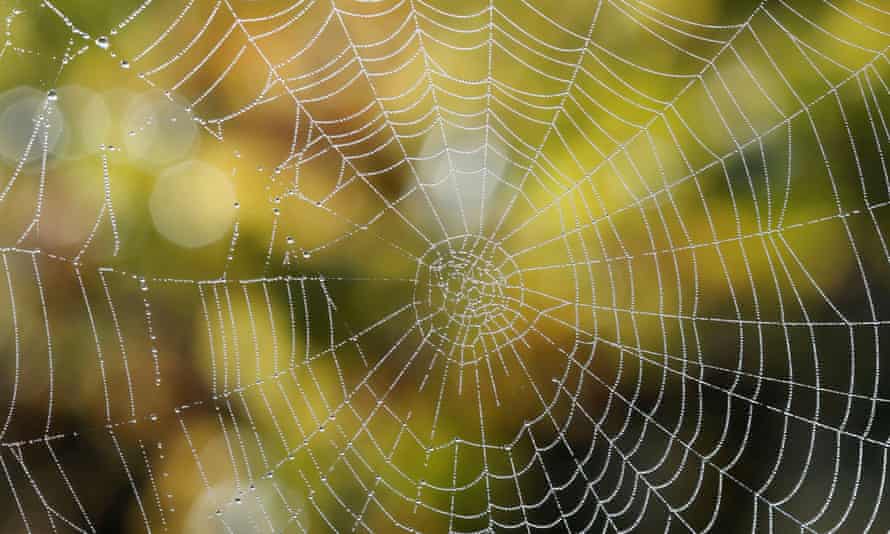The Guardian view on spiders: season of the web
Many people have mixed feelings about arachnids, but like many more popular animals they need our help

Much less visible for most of the year, spiders make their presence felt in late August and through the early autumn. This is the mating season of some of the most common varieties, when male house spiders come out of hidden corners to look for females, and garden spiders reach adult size and spin their biggest, most dazzling webs.
Yet while the spider is familiar, the star of one of the great children’s books, Charlotte’s Web, and a fixture of nursery rhymes and Halloween decor, its relationship with humans is complicated. Fear of spiders, arachnophobia, is common and has serious impacts on the lives of sufferers. Its prevalence appears unrelated to any rational assessment of risk. Spiders in the UK are almost all harmless. Farmland species perform valuable ecosystem services, by predating on insects that are our competitors for crops. But they have proved durable repositories of human anxieties – with a cultural association with witches and wickedness dating back to the middle ages.
Does this perhaps explain, in part, the lack of data about how spiders are faring in our age of ecological crisis? British butterflies are the most studied group of insects in the world, due to the long tradition of collecting and observing them. But spider conservationist Matt Shardlow points out that it was only in the 1980s that the taxonomy of house spiders was properly sorted out. And while information about insect populations is gathered by experiments that measure the numbers hitting windscreens or traps, there have been few attempts to count spiders.
The huge reductions in the numbers of flying insects can only mean a reduction in spiders’ food supply. A landmark study in Germany identified a 75% fall in insect biomass between 1989 and 2016, with pesticide use thought to be to blame along with the destruction of wild areas for development. This means the overall picture for spiders is worrying, as it is for most creatures. But conservationists are most concerned about those varieties that are in difficulties due to habitat loss and fragmentation, which makes it impossible for them to migrate.
Of around 650 spider species regularly recorded in the UK (around half of which are tiny money spiders), the majority are specialists, which thrive for example in sedge fens, reedbeds, dunes or heathland. Conservation efforts (often led by determined individuals) have helped species including the ladybird spider and the great raft spider to recover by reintroducing them to new areas. With rewilding now firmly on the environmental policy agenda, the hope is that in future, spiders (like other animals) will be enabled to migrate by themselves, adapting to climate change by moving along wildlife corridors.
It seems unlikely that spiders will ever attract the same level of human enthusiasm as bees, birds or butterflies, in spite of their unique status as nature’s spinners. But as they reveal themselves in all their finery this autumn, it would be a good thing if more animal lovers recognised the ways in which spiders – as EB White’s Charlotte famously wrote in her web of her friend Wilbur – are simply “terrific”.